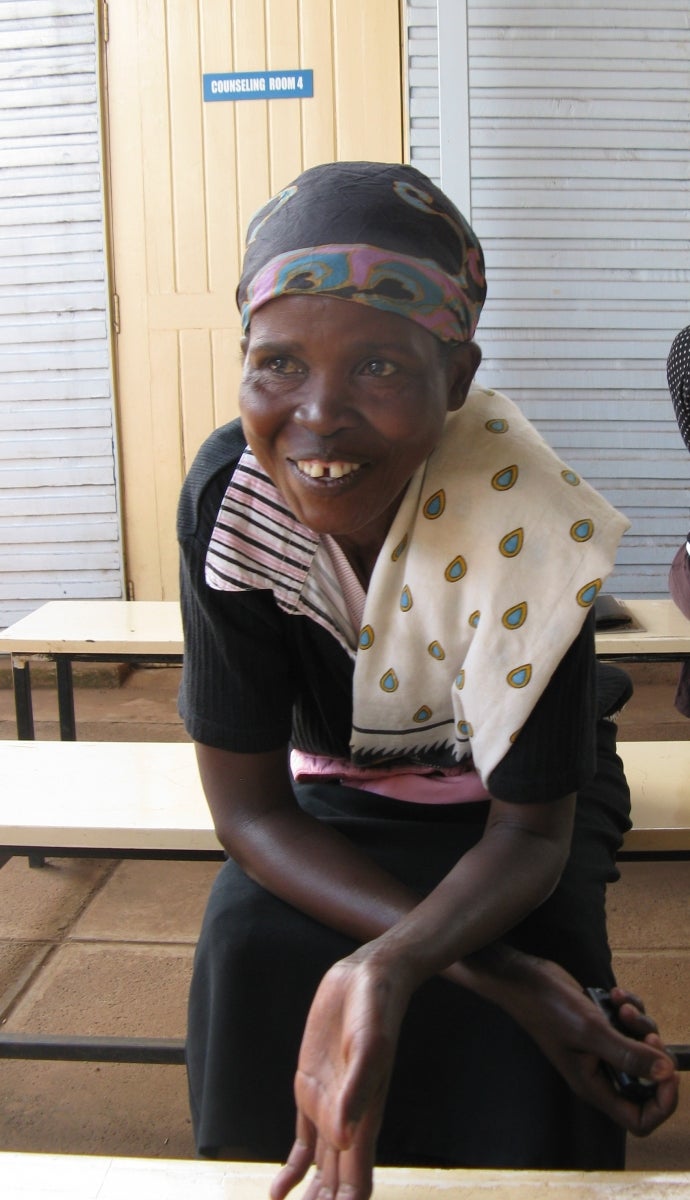“Tuberculosis was a silent killer a few years ago,” says Rogers, a community health worker at the Kangemi Health Center, which assists people living with TB to receive effective treatment in a sprawling settlement on the outskirts of Nairobi.
 Community health workers like Rogers are a vital link between patients and medical providers and are well respected and trusted. They educate, enlighten, and empower patients and people in the wider community. They work with the local area chiefs in mobilizing communities in the fight against TB. Rogers proudly notes that he actively identifies TB cases, provides home-based care, and traces people defaulting on treatment, all critical elements in managing TB at the community level.
Community health workers like Rogers are a vital link between patients and medical providers and are well respected and trusted. They educate, enlighten, and empower patients and people in the wider community. They work with the local area chiefs in mobilizing communities in the fight against TB. Rogers proudly notes that he actively identifies TB cases, provides home-based care, and traces people defaulting on treatment, all critical elements in managing TB at the community level.
Detection and management of TB are critical in Africa, where roughly a quarter million TB deaths were reported in 2010. The continent accounts for about one-quarter of the global TB burden and is facing challenges in meeting the Millennium Development Goal of reducing 1990 TB mortality rates by half by 2015. However, there is also reason for hope on TB control in Africa, as seen in communities like Kangemi. In Kenya, with support from government and partners, including the World Bank (Health Sector Support Project, Total War Against HIV/AIDS Project, East Africa Public Health Laboratory Networking Project), activities are underway to strengthen the availability of drugs, channel funds directly to lower level health centers , and improve access to the latest diagnostic tools for detecting TB. “The state-of-the-art diagnostics will go a long way to turn the tide on this pandemic,” notes Lucy Chesire, Executive Director of the TB Action Group in Nairobi. “Patients will no longer wait months to get results.”
The “one stop shop” approach used at the Kangemi Health Center is a good reflection of other successful programs in Africa. The facility provides TB/HIV care as part of a comprehensive package of primary health services. With community-level care, patients travel shorter distances and are more likely to remain on treatment. Peninah, a mother of four, notes the convenience of collecting both antiretroviral and anti TB drugs close to her home. Cliff, who is suffering from a relapse of tuberculosis, benefits from counseling which has helped him understand that TB can be treated. He serves as a role model for others in his community.
“We cannot work in isolation,”says Cecily, a field officer and local advocate in Kangemi. She emphasizes the importance of empowering the community in planning activities which will ultimately lead to informed and compliant patients.
“Our greatest challenge in TB control is changing the health-seeking behavior of Kenyans, urging them to seek care early before complications develop,” according to Dr. Sitienei, manager of Kenya’s national TB program. He attributes the country’s accomplishments to front line providers who work under difficult conditions. “There is no other opportune time to act than now,” Sitienei says. “Let’s all do something to bring TB deaths to zero and prevent children from being infected so that we have a generation free from TB.”


Join the Conversation